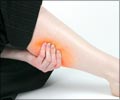Treatment
Treatment of Leriche syndrome involves restoration of adequate blood supply to the lower limbs.
Treatment of Leriche syndrome includes the following:
- Identification and treatment of risk factors: Risk factors for Leriche syndrome should be identified and treated. Thus, conditions like diabetes, hypertension and high lipid levels should be treated. Smoking should be stopped, with the aid of smoking cessation therapies if necessary.
- Antiplatelet medications: Since the patient is at a risk for developing clots, he/she should receive antiplatelet medications like aspirin to prevent clotting of blood and thereby prevent other complications like heart attack and stroke.
- Walking exercise program: Undergoing a supervised walking exercise program helps to improve the oxygen utilization by the muscles over time and improves exercise capacity.
- Medications: Medications like pentoxyfylline and especially the newer drug cilostazol, help to improve the symptoms of claudication.
- Surgery: Various surgical procedures to remove the clot or to bypass it have been used in the treatment of Leriche syndrome. These include:
- Aortoiliac endarterectomy
- Aortobifemoral bypass
- Endovascular repair of aortoiliac lesions
- Percutaneous transluminal angioplasty with placement of stent to keep the vessel patent. This procedure is less invasive than open surgery and may be used as an alternative especially in patients at risk of complications of open surgery.






